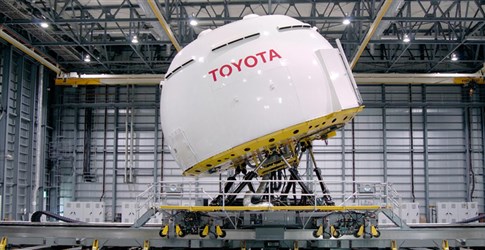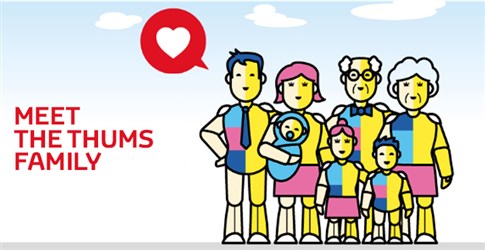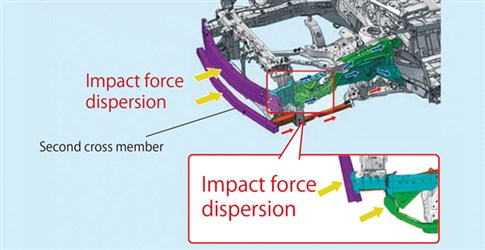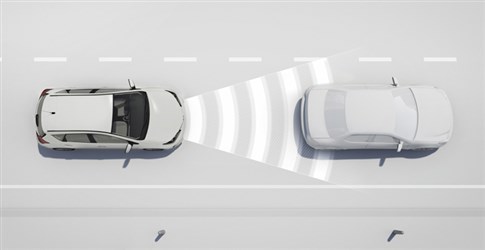
Integrated Three Part Initiative & Integrated Safety Management Concept
Toward achieving a safe mobility society, Toyota believes it is important to promote an Integrated Three Part Initiative, involving people, vehicles and the traffic environment as well as to pursue real-world safety by learning from actual accidents and incorporating that knowledge into vehicle development. Toyota has also defined its Integrated Safety Management Concept as the basic philosophy behind technologies toward achieving the elimination of traffic casualties and is moving toward with developing such technologies.

Integrated Safety Management Concept
Integrated Safety Management Concept Toyota provides optimum driver support for each stage of driving, from parking to normal operation, the accident itself, the pre-and-post crash timeframe and post-accident rescue. Toyota’s approach is to enhance safety levels through strengthening intersystem coordination, rather than evaluating each system alone. Equipped with safety features at every driving stage for greater security. The "Integrated Safety Management Concept" pursues a higher level of safety by linking each individual safety technology system equipped on vehicles.


Integrated Safety System
We hope to achieve a vehicle that causes no accidents by implementing safety technologies and developing automobiles that communicate with road infrastructure and surrounding vehicles. In the "Integrated Safety Management Concept", driving circumstances are classified by the intensity of possible dangers in each stage of driving (Parking, Active Safety, Pre-Collision Safety, Passive Safety and Rescue) and integrating each system.

The safety of the Toyota cars on the road is a top priority for Toyota Motor Corporation.
In pursuit of road safety, Toyota is dedicated to its research and development in Passive Safety Systems that keep occupants safe from accidents. Passive safety combines a body structure that absorbs collision energy with devices that efficiently protect the vehicle occupants and minimize collision damage.

Total Model for Human Safety:
As an integral component of Toyota’s research and development are Toyota’s computerized human models called THUMS (Total Model for Human Safety) that aid the manufacturer to better understand the effect of an impact on the human body and develop more advanced and effective equipment features to help keep occupants safe from harm. THUMS simulate many different aspects of the human form, from skin and bone to muscle tissue and internal organs, allowing virtual methods to be used to understand the real injuries people might suffer in a road accident. THUMS are created across a range of body sizes across genders and age groups (children to elderly) to accurately show the effectiveness of restraint systems like seatbelts or airbags and other safety features during crash tests.
Impact-Absorbing & High-Strength Cabin:
Passive safety combines a body structure that absorbs collision energy with devices that efficiently protect the vehicle occupants in order to minimize collision damage. To reduce injury to vehicle occupants during a collision, it is crucial to prevent vehicle doors and other objects outside the vehicle from penetrating the cabin and to absorb the collision impact. The latest collision-safety structure consisting of an impact-absorbing body and a high-strength cabin incorporates the concept of “compatibility,” aiming to ensure the mutual safety of vehicles of different weights and heights if they collide.


Setting Preventive Link Functions:
Based on Toyota’s Integrated Safety Management Concept of increasing safety by linking individual systems, we are working on technology development for preventive link functions that operate protective devices in a collision by linking with the Pre-collision Safety (PCS) system.
We have developed functions that prepare to deploy the seatbelt mechanism or SRS* side & curtain shield airbags to protect the occupants when the PCS determines that a collision with another vehicleis likely, or prepare to deploy the pop-up hood to protect the pedestrian or cyclist when the PCS determines that a collision with a pedestrian or cyclist is likely.
* SRS (Supplemental Restraint System): A system of supplementary restraints to protect occupants.

To help achieve Zero Casualties from Traffic Accidents, Toyota has been conducting research and development on automated driving technologies since the 1990s. Toyota’s unique approach to automated driving, called the “Mobility Teammate Concept,” seeks out a relationship between people and vehicles so they stand by and support one another as companions would do.

Toyota Mobility:
Based on this philosophy, Toyota is aiming to help realize a world in which every person, including the elderly and the physically challenged, can enjoy mobility safely, easily, and freely.

